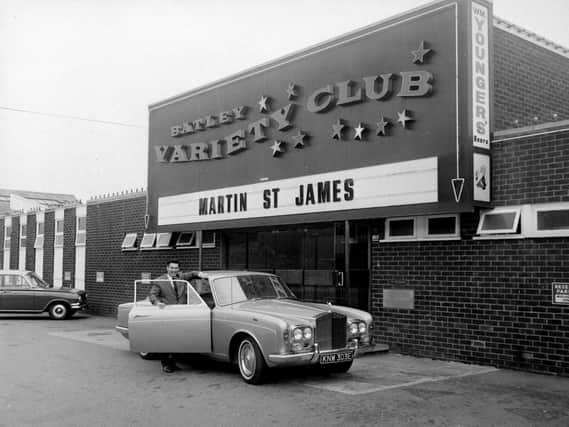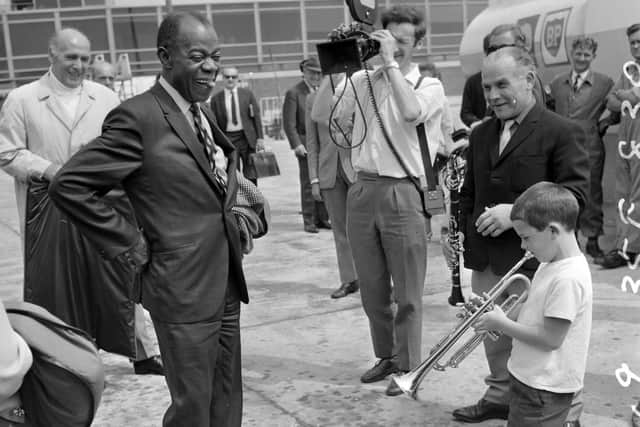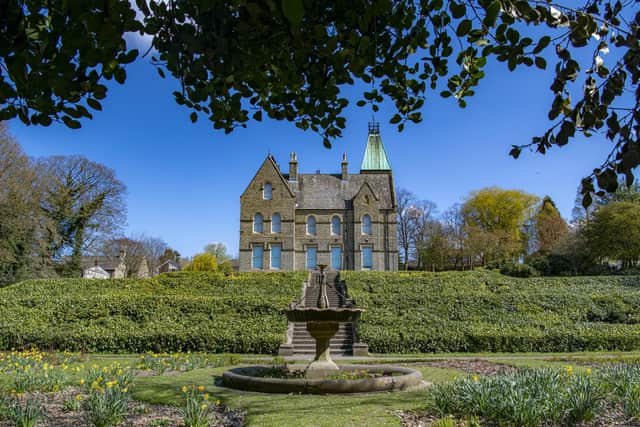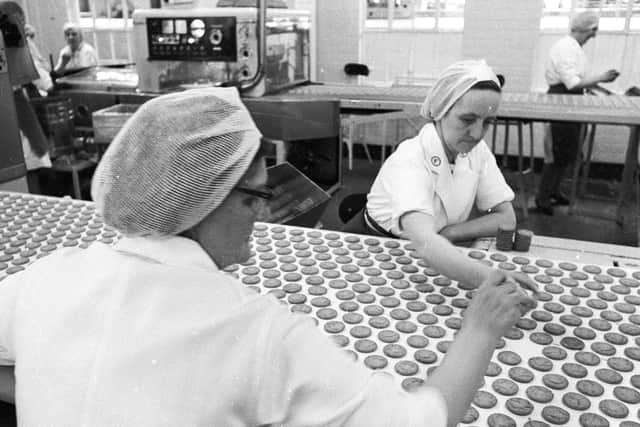From biscuits and rag-wool to Louis Armstrong and the Las Vegas of the North, Batley has quite a story to tell


James Corrigan was none of these. Born in a travelling showman’s caravan at Filey, he rarely went to school and worked for a time as a fairground barker. But he would go on to reach the top rung of the entertainment ladder as an impresario and showman – and he did it all in Batley
Through imagination and sheer hard work Corrigan, along with his wife Betty, transformed a piece of wasteland on Bradford Road into a venue that put the town in the spotlight and brought stars and glamour to the people of the West Riding which, hitherto, he felt they had been starved of.
Advertisement
Hide AdAdvertisement
Hide AdBatley Variety Club opened on Easter Sunday in 1967, predating the release of the Beatles’ Sgt Pepper album and the Summer of Love by a matter of weeks.


Whether or not psychedelia reached as far as Batley is a moot point, but over the next few years people flocked from far and wide to this 1,600-seater club, that sold beer at 3s 6d a pint, and scampi and chips in a basket for 7s 6d, to see some of the biggest names in showbiz.
This was Las Vegas West Yorkshire style (minus the hot weather) and the club’s fame wasn’t just the talk of the town but even spread as far as the US.
The list of stars who appeared at Batley Variety Club is almost as legendary as the venue and includes Shirley Bassey, Tom Jones, the Bee Gees, Roy Orbison, Dusty Springfield and Eartha Kitt, who, during a visit to Batley Market down the road, led shoppers in a rendition of On Ilkla’ Moor Baht ‘At.
Advertisement
Hide AdAdvertisement
Hide AdCorrigan even travelled to Capri to coax Gracie Fields out of retirement, though his powers of persuasion were less successful when it came to Dean Martin. He reportedly offered the Rat Pack star £45,000 to appear in Batley, a fortune at the time, but his manager was unimpressed saying: “My boy wouldn’t get out of bed to p*** for that.”


Corrigan fared better with another showbiz legend, Louis Armstrong, who played a two-week residency at the venue in 1968.
It seems hard to comprehend that one of the 20th century’s most famous musicians came to play in this unassuming West Yorkshire mill town, but he did, and the packed crowds adored him. And it seems the feeling was mutual, with the man nicknamed ‘Satchmo’ famously describing Batley as a “human aspirin”.
Corrigan put every penny he had, along with plenty more that he borrowed, into building the club and making his dream a reality.
Advertisement
Hide AdAdvertisement
Hide AdHowever, it became a victim of its own success and clubs in places like Wakefield and Sheffield copied his formula and started to take a bite out of the business. His glittering empire later crumbled and he went bankrupt.


As for the club, it went on to become the Frontier nightclub and underwent several makeovers before closing its doors to be turned into a gym.
Corrigan died in 2000, but he left behind a legacy that is still talked about by folk today.
Batley’s story, of course, is about far more than one man. It was the advent of the Industrial Revolution that was to transform the town, which went from being little more than a hamlet in the 17th century to becoming the capital of the “shoddy” industry by the mid-19th century.
Advertisement
Hide AdAdvertisement
Hide AdThe manufacture of shoddy goods is believed to have been started by Benjamin Law around 1813, and the town’s prosperity, and population, grew rapidly, with at one time as many as 30 mills devoted to the recycling of wool rags into everything from blankets and carpets to army uniforms.
Shoddy was the name given to inferior woollen yarn made by shredding scraps of woollen rags into fibres, grinding them and then mixing them with small amounts of new wool.
This was then used to manufacture a cheap cloth that could be made into products and clothes and was also known as rag-wool.
The collection of the rags for this process started in streets all over Britain by rag dealers, or “rag-and-bone men” as they became more commonly known. The wool rags were then sent to the shoddy mills for processing and for several decades shipments of rags even arrived from continental Europe.
Advertisement
Hide AdAdvertisement
Hide AdBatley’s success during this period is woven into that of the surrounding Kirklees district, which carved out a global reputation for its textiles, with innovators pushing technologies to new levels.
The West Riding was among the areas of the country that were transformed the most by the Industrial Revolution, the effects of which continued after the Second World War, with an influx of South Asian families arriving to work in the mills.
It’s not just the textiles industry that has left an indelible mark on the town. Yorkshire has a rich heritage when it comes to food – think of Harry Ramsden and fish and chips, Rowntree’s and Terry’s and chocolate, and Batley, too, has its own claim to fame.
The town’s heritage in the biscuit trade began when Michael Spedding opened a small confectionery shop in 1853. The name Fox finally came to the fore when his son-in-law Fred Ellis Fox took the reins some years later, spawning a biscuit empire that has given the world the likes of Crinkle Crunch, Party Rings and Rocky bars.
Advertisement
Hide AdAdvertisement
Hide AdToday, Fox’s Biscuits is well known both here and abroad (apparently the company bakes more than six billion biscuits a year), and it is still based in the town where it remains one of its biggest employers (Tracy Brabin, the town’s MP worked at the factory as a teenager).
It’s also ingrained in the local community with the Batley Bulldog’s stadium, home of the town’s much loved rugby league team, bearing the firm’s name.
The story of Batley, though, is not without struggle and the rag-pulling industry that once created money and jobs in the area has all but gone.
However, like so many other places that have faced adversity, there is a sense of pride and togetherness among the people that live here. And there is cause for optimism, too.
Advertisement
Hide AdAdvertisement
Hide AdThe renovation of former mill buildings, most notably in the shape of Redbrick Mill, the popular interiors department store, has been a boost for retail in the town. While Bagshaw Museum is among the galleries and museums in Kirklees that will benefit from the Culture Recovery Fund Grants programme.
Set in 36 acres of parkland and ancient woodland in Wilton Park, this Victorian former mill owner’s house is home to numerous galleries and artefacts that tell the story of Batley. And as we’ve seen, it’s quite a story.
Comment Guidelines
National World encourages reader discussion on our stories. User feedback, insights and back-and-forth exchanges add a rich layer of context to reporting. Please review our Community Guidelines before commenting.